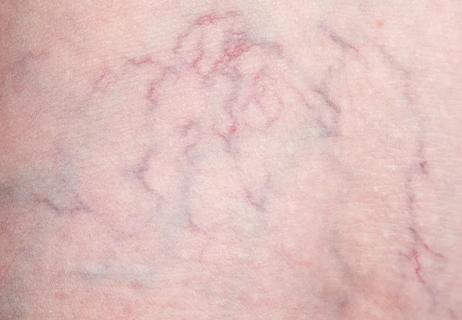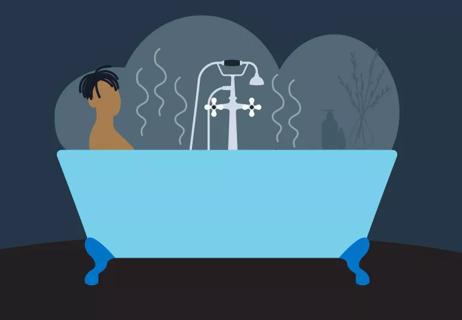How to find relief

Sciatica. You’ve heard other people talk about this weird leg pain — and now, joy, you’ve got mystery leg pain of your own. Is it sciatica? Spine expert Santhosh Thomas, DO, MBA explains what it is, how to tell if you have it — and how to get relief.
Advertisement
Cleveland Clinic is a non-profit academic medical center. Advertising on our site helps support our mission. We do not endorse non-Cleveland Clinic products or services. Policy
Sciatica is leg pain caused by a pinched nerve. And not just any nerve: Sciatica affects the sciatic nerve, the longest, widest nerve in your body. (In other words, it’s important — and when it’s hurting, it’s hard to miss.)
Nerves come out from your spine and sacrum (your tailbone) and supply strength, sensation and contribute to reflexes that are checked in the doctor’s office. These small nerves exit the spine and form the sciatic nerve, which branches out from each side of your tailbone. They come together, then split again into two large segments that run through your backside and down each leg. They bring movement and sensation to your hips, buttocks and legs.
Sciatica rears its ugly head when something compresses the nerve. That pinch results in pain (and sometimes weakness) up and down the leg, usually just on one side.
“People describe it in all sorts of ways — burning, tingling, numbness, radiating pain or electric shock sensations,” Dr. Thomas says. “Those sensations can come right out of the blue.”
The pain can be severe and might even make it hard to walk or stand.
A variety of problems can put the squeeze on your sciatic nerve. Some of the more common culprits include:
Advertisement
Sciatica isn’t the only reason for pain in the legs, of course. Other conditions can mimic sciatica:
How can you tell if you’re dealing with sciatica or something else? Sciatica tends to affect the length of the leg, not just the foot. And most often, that pain radiates downward from top to bottom, Dr. Thomas says.
Another clue: Sciatica usually strikes just one side. “If you have pain in both legs, it is less likely a disc herniation, but more likely due to degenerative changes like spinal stenosis,” he says.
If you suspect you have sciatica, should you drop everything and run (er, limp) to the doctor’s office? It’s usually not an emergency, Dr. Thomas says. But it’s a good idea to get a physical exam to find out what’s going on.
If you have weakness in the leg, or bowel and bladder problems, get checked out soon, he adds. Those symptoms could indicate a more serious problem that could lead to permanent nerve damage if you don’t get prompt treatment.
Sciatica usually goes away in time and without serious complications — though it might take a few weeks or months, Dr. Thomas says. While you wait (impatiently), there are several ways to manage the pain:
Advertisement
Now sciatica isn’t such a mystery. It’s still no fun, but at least you know what you’re dealing with — and relief is in sight.
Advertisement
Learn more about our editorial process.
Advertisement

At-home treatments and lifestyle changes may help ease the symptoms and improve the appearance of varicose veins — but they aren’t a cure

Regular exercise, an iron-rich diet, adequate sleep and bedtime routines that include a warm bath or massage may help with your kid’s RLS

Unlike varicose veins, spider veins don't necessarily indicate poor circulation

Cardio can reduce the appearance of varicose veins, but only temporarily

It could be your feet need a rest, but swollen legs may also be a sign of a serious condition

Some symptoms should be taken seriously

Pain may signal a damaged nerve or herniated disk

Strategies for getting the sleep you need

Babies can get congested easily, but you can calm their cough by keeping them hydrated, using nasal drops and running a humidifier

Weight loss may cause loose, sagging skin and muscle loss to your rear

Several conditions, like vitiligo and fungal infection, can cause a loss of pigmentation, leading to white spots or patches on your skin